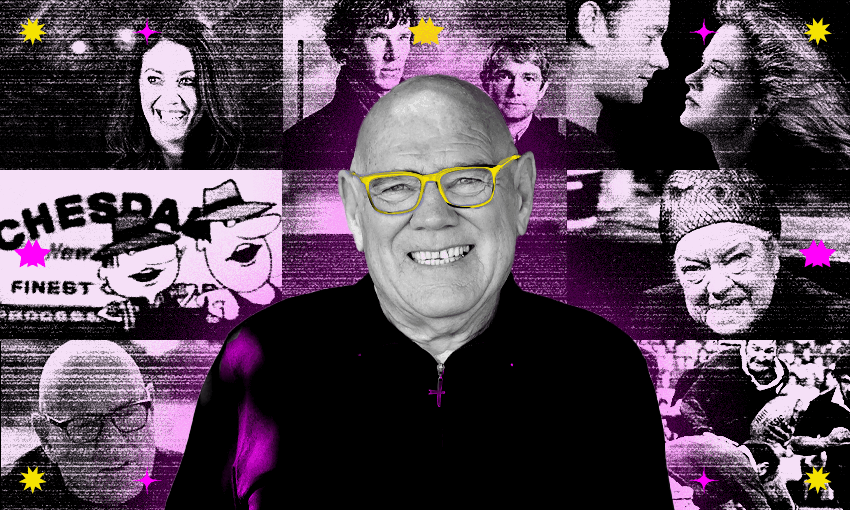A Russian version of Fellowship of the Ring is taking YouTube by storm. How does it compare to our homegrown version?
During the last months of the Soviet Union, Leningrad TV attempted something Peter Jackson wouldn’t have the guts to do for another decade: make a live-action Lord of the Rings. Was Khraniteli (“Keepers of the Ring”) the final nail in the coffin for Gorbachev? Was it a piece of pro-democracy propaganda? It’s certainly a plea for better costume department funding.
It was written and directed by the mysterious Natalya Serebryakova, who appears to have written and directed nothing else. This is a shame, because Khraniteli is sublime.
Some absolute hero has uploaded the 1991 two-part series to YouTube. It totals 115 minutes, which is roughly half as long as Jackson’s version. I watched them both side-by-side, to determine whether our national pride in Lord of the Rings is deserved – or whether the Russians did it better.
Be warned: this is not Frodo and the gang as you know them. This is the fellowship moving through an extremely sketchy special effects set and muttering lines in between bursts of rock music. You can turn the subtitles on if you like, but it won’t help. Give in to the vision.
Bilbo’s party
These scenes are basically the same, except in Serebryakova’s version the camera is in soft focus, and moves jerkily through the crowd like an X-Files scene shot from the monster’s perspective. It’s a really accurate depiction of how I experience parties. Shout out to Lobelia, Bilbo’s cousin. If that’s not the name of a feminine goddess I don’t know what is.
Gandalf’s fireworks
You can’t tell from the picture, but Russian Gandalf’s fireworks aren’t moving at all. That is a drawing scribbled on the inside of his coat.
Costumes
In Khraniteli, hobbits aren’t small. Big props to Jackson for being consistent with his costuming: both his Frodo and Gandalf wear cocktail-rags. Serebryakova has gone more avant-garde, dressing Gandalf in medieval clothes and giving him a blue ombre fringe, while Frodo appears to be a street mime impersonating an 1800s aristocrat.
Deagol’s hair
A fresh young Smeagol kills his friend Deagol for the one ring. Jackson’s ancient hobbits all have the same lank hairdo. Not in Russia, my friends! Huge shout out to Soviet Deagol for sporting a hairstyle no one has dared to sport since: a mullet, divided by colour. Short in the front, long in the back; blonde on the top, dark on the bottom. Whichever way you dice this man’s head, you’re getting variety. And dice his head Smeagol did.
Gollum in his cave
Here he is! The lettuce abomination! Russian Gollum is having much more fun.
Gollum torture
Oh no! He’s being interrogated! In Jackson’s movie, Gollum is put on an unknown but terrifying contraption and tortured by orcs until he screams “Shire… Baggins!” In the Soviet version, Gandalf chokes him out and says “stop lying to me, pal”. These are equally effective techniques.
The ring
This appears to be some sort of foil, until Frodo gets it spinning on his finger. Then it’s a weapon.
The hobbits four
The Soviet power rangers: red, yellow, green, and beige. I believe that’s Peregrin “Pippin, Strong as an Ox” Took in the yellow. An absolute beast.
Goldberry and Bombadil are giants
There is no comparison for this, because Bombadil doesn’t exist in Jackson’s film. In every scene with Bombadil, the Soviet hobbits seem to get smaller. In this one Bombadil and his wife, Goldberry, appear to be about to eat the group in a romantic ode to the Pan’s Labyrinth eyeless buffet scene. Serebryakova is showing Leningrad TV has the power to use size-editing SFX, but refuses to do so.
Aragorn
This is the same man. Just two really low-key dudes on the stride.
Bilbo wants the ring back
Jackson absolutely ripped this off. These two reactions are exactly the same.
Saruman and his orcs
The Saruman we know and fear is a booming, terrifying ent-herder. His Uruk-hai are massive. The Soviet Saruman has a personal display of tiny dancing orcs, and a slipped headband. I know which one I’d put my money on in a war for Middle Earth.
The fellowship!
Look at them all together! In Jackson’s version they are all looking in the same direction. This represents a unity of vision. The absolute chaos of the Soviet fellowship – from Gandalf apparently carrying a baby to Gimli being a table – might explain why Legolas (played by Serebryakova’s daughter) smiles when Gandalf dies.
The Khazad-dûm bridge crossing
Much better in Jackson’s version. For one: there is a Balrog, and Gandalf sacrifices himself to it. For two: it furthers the plot. Serebryakova’s fellowship simply crosses the bridge then says “oh yeah, Gandalf fell off I guess”.
Gimli
Until right now, I thought Soviet Gimli was Boromir’s pet jester.
Galadriel’s dark thoughts
Cate Blanchett in negative and levitating was really scary. I like Serebryakova’s version better because it didn’t make me wet myself.
The eye of Sauron
Jackson’s Sauron is everywhere. He is always watching. Soviet Sauron is made of silly putty and is trapped in a bowl.
Frodo and Sam
Frodo and Samwise, best friends forever. There is no universe in which these two don’t love each other. This is the best friendship in literary history and no director can change that.
Peter Jackson cameo vs the unnamed narrator
There’s Peter Jackson! In his own movie! Director-slash-model, baby! There’s also a cameo in Khraniteli: the narrator. He speaks in maybe a quarter of his scenes, but is mostly staring straight down the barrel of the camera and smoking, silently, for three-second clips at a time. This is a cameo from Andrei Romanov, member of the psychedelic folk band Akvarium and creator of the film’s score. Good job Andrei.



